What Animal Has Lungs Shaped Like A Human Lungs
All animals needoxygen from the environs. They utilise oxygen to transform the nutrients they get from their food into free energy. This energy is used to carry out the dissimilar functions of living, such equally moving, learning, and digesting. When food combines with oxygen, energy is produced. This procedure is called.
During metabolism,carbon dioxide is produced as a waste production. Animals must be able to get rid of carbon dioxide for proper metabolism to happen. Therespiratory system is the organ system animals employ to bring in oxygen and go rid of carbon dioxide. Nosotros call the process of bringing in oxygen and releasing carbon dioxideanimate.
Mammalian Respiratory System
Breathing starts with the motility of air through yourmouth andnostrils. The human being respiratory system begins at thetrachea. This is a stiff tube reinforced by rings of cartilage. It starts at the back of your rima oris and nose and then splits into two tubes calledbronchi.
Image - Text Version
Shown is an illustration of the man respiratory system and upper office of a male human body. The parts of the respiratory organisation are opaque while the residual of the body is translucent.
Coming downwards from the rima oris in the cervix area is a pink tube shaped object labelled equally the trachea. Branching off the bottom of the trachea are the dark pink and heavily veined lungs, one on each side of the trunk. The heart is also shown every bit a yellow shape behind the lungs. At the base of the lungs is a curved low-cal pink shape that is labelled as the diaphragm. The trachea, lungs, heart and diaphragm are labelled together as belonging in the thoracic cavity.
Coming off the left lung are some of the interior structures of the lung. These structures have been significantly enlarged to make them easier to identify.
Direct coming off the lung is a pinkish, spaghetti-like construction that is labelled every bit the bronchus. The bronchus splits into branches, some of which end in structures that resemble bunches of pink grapes. The grape-like objects are labelled as the alveoli. It is within these structures that gas commutation takes identify.
Wrapping around the bronchi and alveoli are 2 other thin, branching structures. The ones coloured red are labelled as pulmonary arterioles and the ones coloured blue are labelled every bit pulmonary venules. These are claret vessels that ship molecules to and from the lungs.
Yous tin feel the cartilage rings in your trachea by running your fingers down the front end of your neck. Tin can you experience the ridges? Those ridges are the cartilage rings! Each splits off many times to form smaller tubes called bronchioles. These bronchioles form a complex network of millions of footling tubes that lead to sacs called alveoli. This circuitous network of tubes and sacs forms the lungs.
Did you know?
Your left lung is smaller than your right lung. This is because the left lung has to leave space for your centre!
Your lungs, every bit well as your heart, are located in your chest, as well known equally yourthorax. These organs are protected past a frame of bones called therib cage. Thediaphragm separates the thoracic cavity from the abdominal crenel, where the stomach and intestines are found. It is a large, dome-shaped muscle located below the rib cage.
Ventilation
Ventilation is the process by which air is pulled in and pushed out of the lungs. This is done by controlling the volume of thethoracic cavity, which is the space where the lungs are plant. The principal muscle responsible for ventilation is the diaphragm. It is helped by theintercostal muscles, which are muscles betwixt our ribs.
When you exhale in, the diaphragm and intercostal muscles contract. This increases the volume of the thoracic cavity and causes air to rush into the lungs. This phase of ventilation is choseninhalation.
Exhalation is when you breathe air out. During this stage, the diaphragm and intercostal muscles relax. This causes the infinite in the thoracic cavity to go smaller so air is forced out of the lungs.
Effort taking a deep breath and imagining you are filling your lungs completely total of air. If you put your easily on your tummy, you can feel how far information technology moves out each time you breathe in.
The Gas Exchange Pathway
Allow's zoom in at a microscopic view and see how oxygen and carbon dioxide are transported and used in our bodies.
When an oxygen molecule is inhaled, it moves into the respiratory arrangement through the mouth or nose. It then passes through the trachea, bronchi and bronchioles and into an alveolus. In the alveolus, the oxygen diffuses into theclaret in the surrounding . At present the oxygen is in thecirculatory system.
are specialized cells that carry the gases in the blood. They do this using a specialized protein calledhemoglobin. Inside scarlet claret cells, hemoglobin binds with molecules of oxygen and carbon dioxide. Hemoglobin relies on an iron molecule to make this happen. That's why it's important to always have enough iron in your diet. A deficiency in fe is calledanemia. This can cause fatigue as well as other more serious wellness issues.
You probably know that when fe rusts it looks ruby-red-orange. The same happens when hemoglobin binds to oxygen molecules. This is the reason why our claret looks cerise.
Did y'all know?
Some animals use other molecules with their gas exchange proteins. Horseshoe crabs accept a poly peptide that binds with copper calledhemocyanin. This makes their blood look blue. And it doesn't end there! Some animals have imperial or even transparent blood!
Misconception Alert
You might see blue veins through your pare. But the blood in our veins is not blueish. This is an effect of blue light being the only one that tin travel through our skin to our eyes!
Image - Text Version
Shown is a colour illustration of the organs and cells involved in gas exchange. On the upper left is an illustration of the lungs. A greenish arrow on the right of the lungs points to ruddy oval-shaped objects overlaid with small blue spheres. The ovals are red claret cells and the spheres represent oxygen molecules. From there some other greenish pointer points to the heart. Below the heart, another dark-green arrow points to more blood cells with oxygen. A second light-green pointer points to a red tube-shaped structure identified as an artery. To the left of the avenue is a similar blue construction identified as a vein. Between the avenue and vein are thin branching ruby and bluish lines identified as capillaries. Above the vein is a red arrow that points to blood cells that accept yellow spheres instead of blue spheres. These spheres stand for carbon dioxide molecules. Above these claret cells is a reddish pointer pointing to the heart. To the left of the middle is a carmine arrow pointing to more than blood cells with carbon dioxide. To the left of the blood cells is a scarlet arrow pointing to the lungs.
The oxygenated blood is and so sent from the lungs to theheart which pumps information technology to the rest of the body through thearteries. Arteries branch out into all parts of the torso and get smaller, until they gocapillaries. Here oxygen diffuses from the claret to the body cells that need it.
Improvidence is the movement of molecules from an area of high concentration to an area of depression concentration. High concentration areas are where there are many of a certain type of molecule. Low concentration areas are the contrary.
Improvidence of oxygen from the blood to the body cells happens because the concentration of oxygen is higher in the claret than in the cells. Since molecules motion from high to low concentration, oxygen moves from blood to cells.
Within whatsoever body cell, oxygen is taken up bymitochondria. Some people call this thepowerhouse of the prison cell. There's a adept reason for this. In the mitochondria, oxygen and sugars are used and produce energy for bodies. A waste production of thismetabolism is carbon dioxide.
Now, let's follow a carbon dioxide molecule as it leaves the body. The concentration of carbon dioxide in the blood increases as cells produce it as waste matter. This causes information technology to diffuse into the blood. The carbon dioxide is carried by the red blood cells through theveins to the lungs. The lungs accept a low concentration of carbon dioxide compared to blood. This is why carbon dioxide diffuses into thealveoli of the lungs. From at that place it passes through bronchioles, bronchi, and the trachea to leave the body through the nose or mouth. This is the process ofexhalation.
The process of absorbing oxygen and releasing carbon dioxide we callgas commutation. All animals utilise a gas substitution to breathe. There are some differences, though, in the organs and molecules that brand information technology happen.
Did you know?
There is a group of tiny lesser-dwelling marine organisms that live in an environment with no oxygen. It is believed that the Loricifera do non have mitochondria, and instead have a different type of organelle that can metabolize carbohydrate without oxygen.
Paradigm -Text Version
A pink-stained microscope prototype of a tiny organism resembling a closed umbrella superlative continued to a shaggy head of pilus.
Respiratory Systems of Non-Mammalian Animals
Birds
The lungs of birds are organized very differently than those of humans. Unlike in human lungs, where the air moves both in and out, in bird lungs, the air only flows in i management. To help make this possible, birds have nineair sacs that surround the lungs. The air sacs allow for a continuous stream of air to period through the lungs. Information technology is important to note that gas exchange does not happen inside the air sacs.
For a complete respiratory cycle, birds require two inhalations and two exhalations.
- On thecommencement inhalation air flows from the trachea to the rear air sacs.
- On theoffset exhalation air flows from rear air sacs to lungs.
- On thesecond inhalation air flows from lungs to front air sacs.
- On thesecond exhalationair flows from the front air sacs out through the trachea.
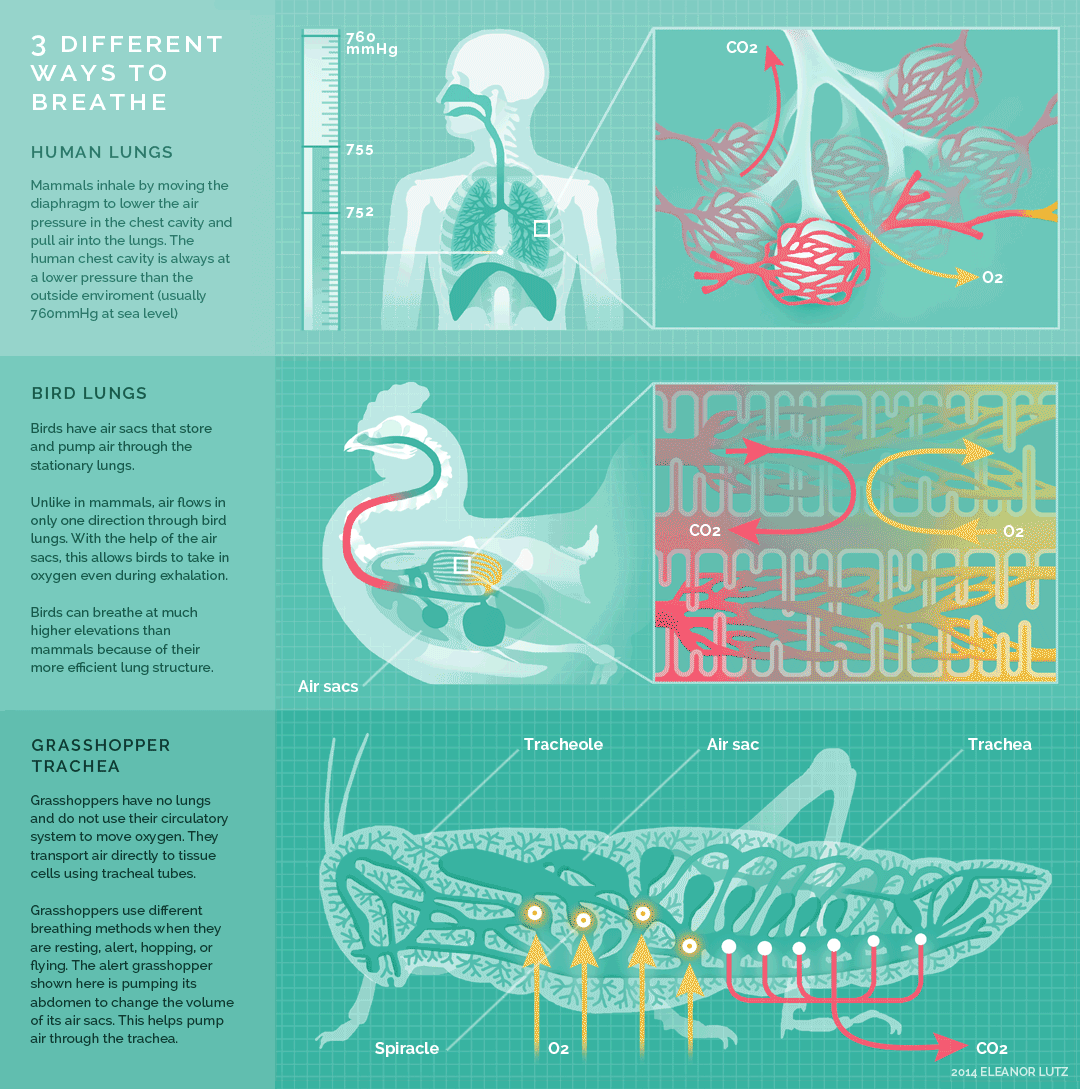
Prototype -Text Version
Human being Lungs
Mammals inhale by moving the diaphragm to lower the air pressure level in the breast cavity and pull air into the lungs. The human chest cavity is ever at a lower force per unit area than the outside environment (ordinarily 760mmHg at sea level).
Bird Lungs
Birds have air sacs that store and pump air through the stationary lungs.
Different in mammals, air flows in only i direction through bird lungs. With the help of the air sacs, this allows birds to take in oxygen even during exhalation.
Birds tin can exhale at much higher elevations than mammals because of their more efficient lung structure.
Grasshopper Trachea
Grasshoppers have no lung and do not utilize their circulatory system to motion oxygen. They transport air directly to tissue cells using tracheal tubes.
Grasshoppers apply different animate methods when they are resting, alert, hopping, or flying. The alert grasshopper shown here is pumping its belly to alter the volume of its air sacs. This helps pump air through the trachea.
The bird respiratory system is far more than efficient than that of mammals. The continuous flow of oxygen is of import to birds as they need a lot of free energy to wing. Another advantage of the air sacs is that they brand birds less heavy!
Reptiles
The respiratory system of reptiles is similar to that of humans. Ane major exception is that most reptiles, except for members of the crocodile family, do not have a diaphragm. They take evolved unlike ways to inflate their lungs.
Many reptiles and amphibians utilize their pharynx muscles to "gulp" air in a process chosenbuccal pumping.
Epitome - Text Version
Shown is a colour illustration showing the four-step process of inspiration and expiration in a frog.
On the left side is a blueish rectangle with the title, "inspiration." In the rectangle are two drawings of frogs. The frog on the left has several torso parts labelled. These include the nostrils, which are located to a higher place the oral cavity, the lungs, which are located in the main part of the body, and the buccal crenel which is located in the throat surface area. In this kickoff stage of inspiration, a blueish arrow shows how air moves from outside the frog, through the nostril and into the buccal crenel. Red arrows evidence that when this happens, the buccal cavity expands outwards. The frog on the correct shows what happens in the adjacent phase of inspiration. The nostril is shown as airtight, a blue pointer points to air moving past a part identified every bit the glottis and into the lungs. One cerise arrow points to the buccal cavity which has contracted. Another cherry-red arrow shows that the lungs are expanding.
On the right side is a pink rectangle with the title, "expiration." Over again, there are 2 drawings of frogs. The frog on the left illustrates what happens during the showtime stage of expiration. A bluish arrow shows how air moves from the lungs and through the glottis. Red arrows show that when this happens, the buccal cavity expands outwards. The frog on the correct shows what happens in the second stage of expiration. The nostril is shown as open, a blueish arrow points to air moving out through the nostril. One red pointer points to the buccal cavity which has contracted. At this stage the lungs take contracted.
At that place are four steps in buccal pumping.
- First, air is permit in through thenostrils. Thebuccal cavity, which is connected to the mouth, expands.
- When the buccal cavity is full, the nostrils close and airways to the lungs open. The opening to the airway is chosen theglottis. Then, the animate being uses muscles to push air into the lungs.
- When exhaling, first the lungs contract which pushes air into the buccal cavity. The buccal cavity once more expands.
- Finally, the glottis closes, the buccal cavity contracts and the nostrils open.
Turtles apply many different methods to breathe. Some move their legs into and out of their shells to assistance inflate and deflate their lungs. Others have large muscles that wrap effectually the lungs to control the volume of the thoracic cavity. Finally, some aquatic species can even use theircloacato breathe. The cloaca is the external opening used for solid, liquid excretions and access to the reproductive system. In mammals, there are dissimilar openings for these things. Cloacal breathing is more often than not used when turtles hibernate underwater. It is considered to be a blazon of respiration, which is gas exchange that happens through the skin.
Did you know?
Sea turtles tin hold their breath for up to 10 hours!
Another interesting detail of most reptiles is that they lack a separation between their olfactory organ and mouth. This forces them to stop breathing to be able to swallow. To deal with the long time it takes to consume their prey, snakes have a long extension of the trachea.
Paradigm - Text Version
Shown is a colour photo of a ophidian. The snake is nighttime brown with small beige patches here and in that location. The surface area around the mouth is a pale orange. Only the head and a few coils of the body are visible through some blurry leaves. The ophidian'southward mouth is wide open. Within the stake pink rima oris is a pink tube-shaped structure. This is the ophidian's trachea.
Amphibians
Amphibiansare animals that take adapted to living both on state and in water. This grouping includes frogs, toads, salamanders and newts. Amphibians are interesting because they get-go off every bit aquatic larvae earlier they move on land as adults. Every bit they grow and move from living in water to living on state, their respiratory systems change.
In their juvenile forms, amphibians havegills that let them breathe underwater, just like fish. Equally they grow to their adult form, the gills disappear and lungs develop to replace them. Some species of salamanders remain aquatic, notwithstanding, and keep their gills all through their lives. We call keeping characteristics of the larval phaseneoteny.
Neoteny is easily seen in axolotl (pronounced axe-o-lot-ill), a popular aquarium species from Mexico. In Canada, our largest salamander species is the mudpuppy. It is piece of cake to recognize because it has reddish gills on each side of its caput.
Image - Text Version
Shown is a colour photograph of a mudpuppy. Merely the head, forepart correct leg and a small portion of the torso is visible. The mudpuppy is mainly a purplish-grey colour. It as well has golden splotches all over its body. It has a wide, flat head with small aureate and blackness eyes. Merely behind the head are projections, similar to ears, that take nighttime red feathery edges. These are their gills.
In addition to buccal pumping, amphibians likewise employ . This means that the gas exchange happens through the beast's skin. Many other animals take cutaneous gas substitution, even humans, only in small quantities! Amphibians rely on this process much more. The lungless salamander, as its proper noun implies, almost exclusively uses its peel to breathe. This animate method requires having thin skin that tin exist kept wet, which many amphibians have. Since their breathing happens through their peel, it is all-time not to handle amphibians. Non but tin can you impact their breathing, you can also transfer germs from your pare to theirs.
Fish
The respiratory organization in fish is very different from the respiratory systems ofanimals. Like frog larvae and mudpuppies, fish accept gills. Gills are similar to lungs in that they have branches that split.Gill arches branch to formgill filaments. On the gill filaments aregill lamellae, which is where gas exchange occurs. Here oxygen dissolved in water diffuses into the claret and carbon dioxide diffuses into the water.
In , a bony plate called anoperculum covers and protects the frail gills. Incartilaginous fishes, such as sharks and rays, the gills are located nigh their five to 7 gill slits.
During the inhalation stage, fish pull water in through theiroral valve to their buccal cavity. From there the water is pushed towards their gills. Theopercular valve is closed at this point. During the exhalation phase, the oral valve is closed and the opercular valve is opened. Water passes over the gills and out through the opercular valve.
Image - Text Version
Shown is a colour illustration of the processes involved in fish inhalation and exhalation.
On the left side is a pale dark-green rectangle with the championship, "Inhalation." Below it is a cutaway view of a fish's caput. At the height end is the oral cavity. Information technology is fairly pointed and has a narrow opening which connects with the larger buccal crenel. Pink arrows on either side of the head betoken that the fish is pushing its gills outwards. When this happens, blue arrows indicate that water comes in through the oral valve and into the buccal cavity and then on to the pharynx at the back of the head. The water then heads towards the gill arches, which are light pink two-pronged structures. Beyond the gill arches is an opening with a small flap in the closed position. This is the opercular valve. Some water also passes into the fish's esophagus at the back of the caput.
On the correct side is a pink rectangle with the title, "Exhalation." Below it the aforementioned cutaway view of a fish's head as in the previous prototype. Pinkish arrows on either side of the caput indicate that the fish is pulling its gills inwards. At this point the oral value at the mouth is closed. Blue arrows indicate that some h2o bypasses the fish'south caput. Other blue arrows inside the pharynx expanse betoken that the water is passing over the fill up arches. Some of the water is too passing through the at present open opercular valve and out to surrounding water. Nigh water does not pass into the esophagus at this stage.
Some fish accept specialized muscles that permit them to pump the water over their gills. Fish that are very active use a blazon of ventilation calledram ventilation. Moving forward forces water to motility over the gill arches then that oxygen and carbon dioxide tin can exist exchanged. Sharks are a type of fish that use ram ventilation. This is why some species of sharks can really drown if they cease moving!
Did you know?
Sharks and rays bring water into their buccal cavities through an extra opening behind the center called aspiracle. Spiracles are too used by insects for respiration.
Source: https://letstalkscience.ca/educational-resources/backgrounders/respiratory-system-in-vertebrate-animals
Posted by: lewisovelly1950.blogspot.com

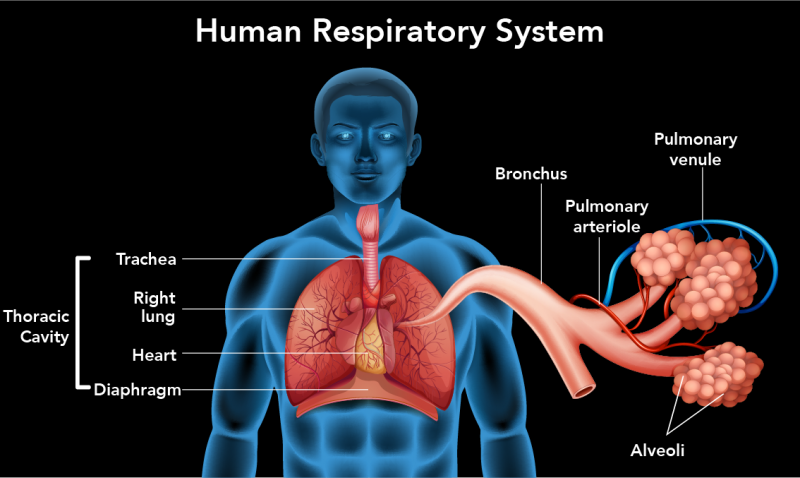
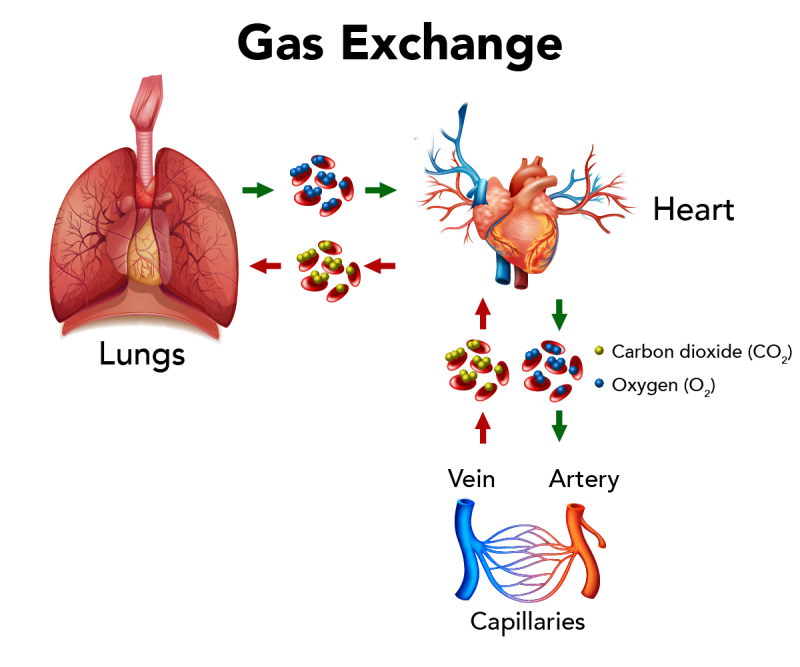

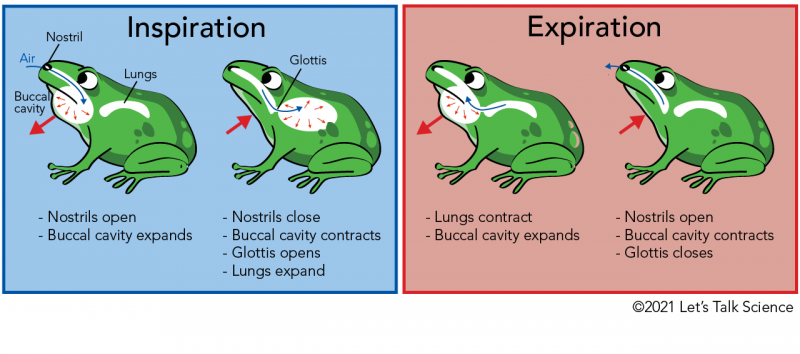
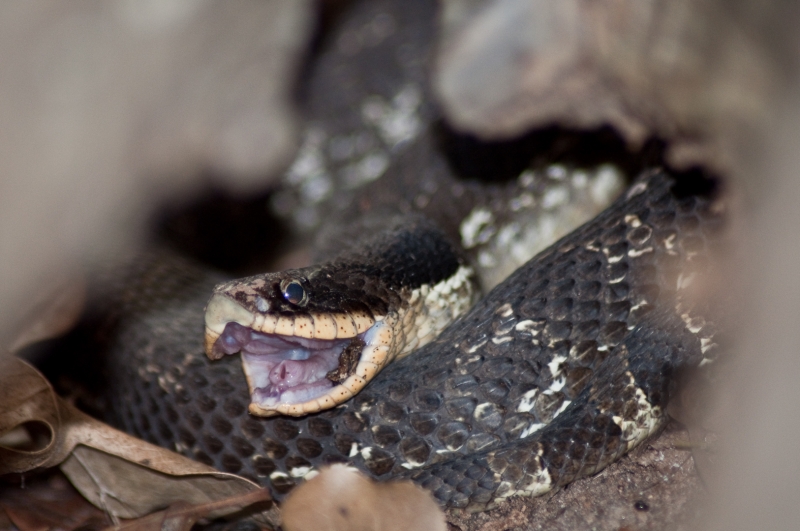
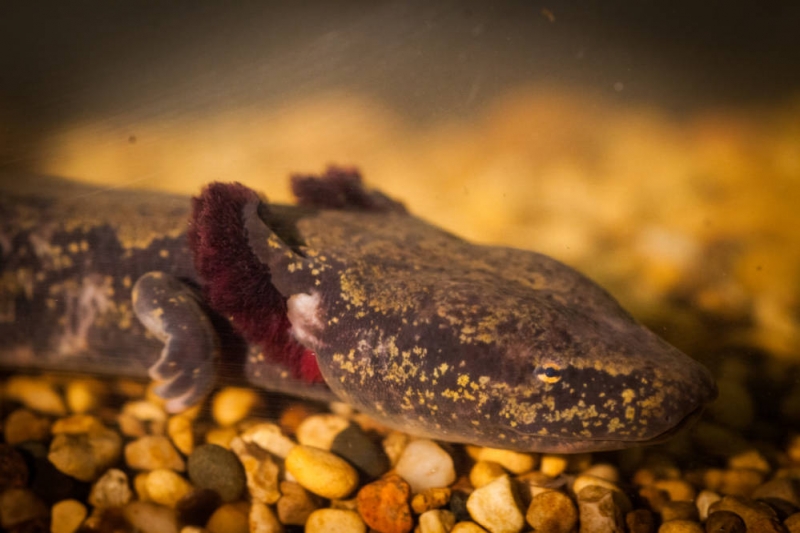
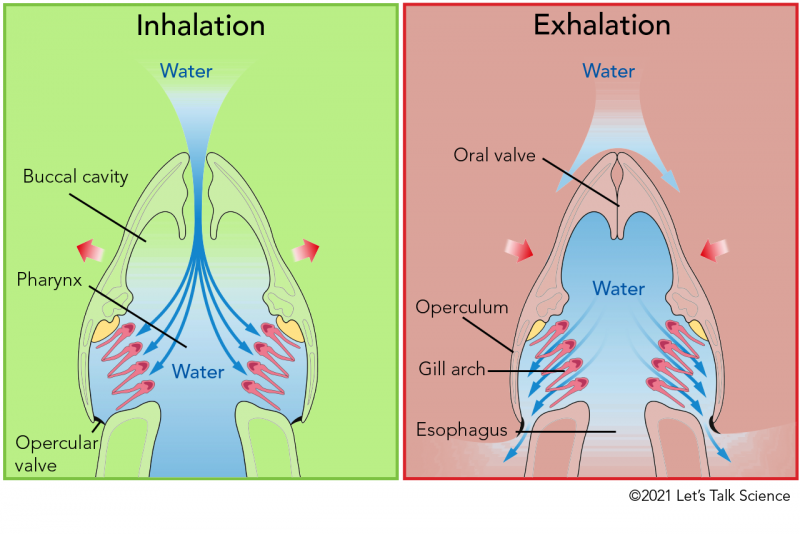
0 Response to "What Animal Has Lungs Shaped Like A Human Lungs"
Post a Comment